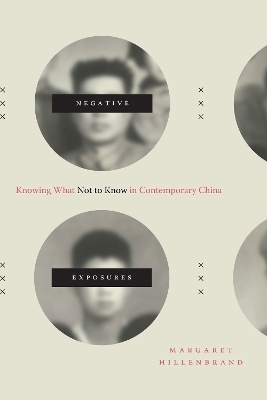
Negative Exposures
Knowing What Not to Know in Contemporary China
Seiten
2020
Duke University Press (Verlag)
978-1-4780-0800-2 (ISBN)
Duke University Press (Verlag)
978-1-4780-0800-2 (ISBN)
Margaret Hillenbrand explores how artistic appropriations of historical images effectively articulate the openly unsayable and counter the public secrecy that erases traumatic episodes from China's past.
When nations decide to disown their troubled pasts, how does this strategic disavowal harden into social fact? In Negative Exposures, Margaret Hillenbrand investigates the erasure of key aspects of such momentous events as the Nanjing Massacre, the Cultural Revolution, and the Tiananmen Square protests from the Chinese historical consciousness, not due to amnesia or censorship but through the operations of public secrecy. Knowing what not to know, she argues, has many stakeholders, willing and otherwise, who keep quiet to protect themselves or their families out of shame, pragmatism, or the palliative effects of silence. Hillenbrand shows how secrecy works as a powerful structuring force in Chinese society, one hiding in plain sight, and identifies aesthetic artifacts that serve as modes of reckoning against this phenomenon. She analyses the proliferation of photo-forms—remediations of well-known photographs of troubling historical events rendered in such media as paint, celluloid, fabric, digital imagery, and tattoos—as imaginative spaces in which the shadows of secrecy are provocatively outlined.
When nations decide to disown their troubled pasts, how does this strategic disavowal harden into social fact? In Negative Exposures, Margaret Hillenbrand investigates the erasure of key aspects of such momentous events as the Nanjing Massacre, the Cultural Revolution, and the Tiananmen Square protests from the Chinese historical consciousness, not due to amnesia or censorship but through the operations of public secrecy. Knowing what not to know, she argues, has many stakeholders, willing and otherwise, who keep quiet to protect themselves or their families out of shame, pragmatism, or the palliative effects of silence. Hillenbrand shows how secrecy works as a powerful structuring force in Chinese society, one hiding in plain sight, and identifies aesthetic artifacts that serve as modes of reckoning against this phenomenon. She analyses the proliferation of photo-forms—remediations of well-known photographs of troubling historical events rendered in such media as paint, celluloid, fabric, digital imagery, and tattoos—as imaginative spaces in which the shadows of secrecy are provocatively outlined.
Margaret Hillenbrand is Associate Professor of Modern Chinese Literature and Culture at the University of Oxford. She is the author of Literature, Modernity, and the Practice of Resistance and the coeditor of Documenting China.
Series Editor's Preface ix
Acknowledgments xi
Preface xiii
Introduction. Staking Out Secrecy 1
1. Don't Look Now 45
2. Keeping It in the Family 89
3. Cracking the Ice 131
4. Ducking the Firewall 168
Conclusion. Out of the Darkroom 209
Notes 225
References 245
Index 277
| Erscheinungsdatum | 25.02.2020 |
|---|---|
| Reihe/Serie | Sinotheory |
| Zusatzinfo | 66 illustrations |
| Verlagsort | North Carolina |
| Sprache | englisch |
| Maße | 152 x 229 mm |
| Gewicht | 454 g |
| Themenwelt | Sachbuch/Ratgeber ► Geschichte / Politik ► Allgemeines / Lexika |
| Geisteswissenschaften ► Geschichte ► Regional- / Ländergeschichte | |
| ISBN-10 | 1-4780-0800-8 / 1478008008 |
| ISBN-13 | 978-1-4780-0800-2 / 9781478008002 |
| Zustand | Neuware |
| Informationen gemäß Produktsicherheitsverordnung (GPSR) | |
| Haben Sie eine Frage zum Produkt? |
Mehr entdecken
aus dem Bereich
aus dem Bereich
von der Antike bis ins 21. Jahrhundert
Buch | Softcover (2024)
C.H.Beck (Verlag)
12,00 €


